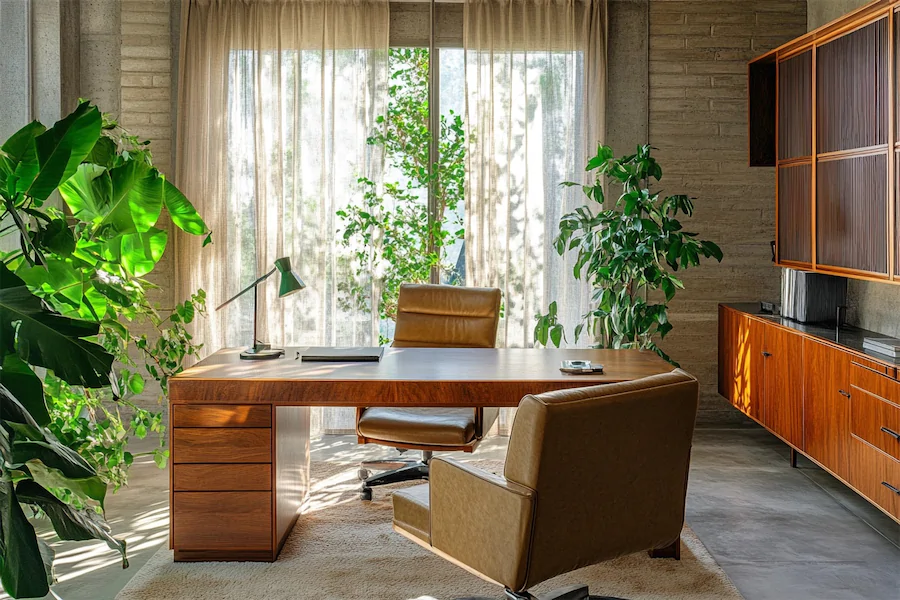Incorporating natural materials into office design has become increasingly popular, aligning with sustainable practices and biophilic design principles. This approach enhances aesthetics, promotes employee well-being, and reduces environmental impact.
Introduction to Natural Materials in Office Design
Natural materials such as wood, stone, bamboo, and natural fibers are integral to creating workspaces that feel warm and inviting. Their use in office design not only adds aesthetic value but also contributes to a healthier and more sustainable environment.
History and Origins of Natural Materials in Office Design
The use of natural materials in architecture and interior design dates back centuries, with traditional structures often built from locally sourced materials. In modern office design, there has been a resurgence in incorporating these elements, driven by a desire to create more sustainable and human-centered work environments. This shift is influenced by biophilic design principles, which emphasize the human connection to nature.
Key Features of Natural Materials in Office Design
- Aesthetic Appeal: Natural materials introduce unique textures and patterns, enhancing the visual interest of office spaces.
- Sustainability: Materials like reclaimed wood and bamboo are renewable and have a lower environmental impact compared to synthetic alternatives.
- Health Benefits: Natural materials can improve indoor air quality by reducing the presence of volatile organic compounds (VOCs) commonly found in synthetic materials.
- Acoustic Properties: Materials such as wood can enhance acoustics by absorbing sound, creating a more comfortable work environment.
Applications of Natural Materials in Office Design
- Furniture: Desks, chairs, and tables made from solid wood or bamboo add warmth and durability to the workspace.
- Flooring: Natural stone tiles or hardwood floors provide longevity and a timeless aesthetic.
- Wall Treatments: Wood paneling or natural fiber wallpapers can introduce texture and depth to office interiors.
- Decorative Elements: Incorporating plants, stone sculptures, or water features can enhance the biophilic quality of the space.
Considerations When Choosing Natural Materials for Office Design
- Source Sustainability: Ensure materials are sourced responsibly, preferably with certifications like FSC (Forest Stewardship Council) for wood products.
- Maintenance Requirements: Natural materials may require specific maintenance to preserve their appearance and longevity.
- Cost Implications: While some natural materials may have a higher upfront cost, they often offer better durability and lifespan.
- Compatibility with Design Aesthetics: Select materials that complement the overall design theme of the office.
Conclusion
Integrating natural materials into office design offers numerous benefits, from enhancing aesthetic appeal to promoting sustainability and employee well-being. By thoughtfully selecting and incorporating these materials, organizations can create workspaces that are not only functional but also nurturing and inspiring.
